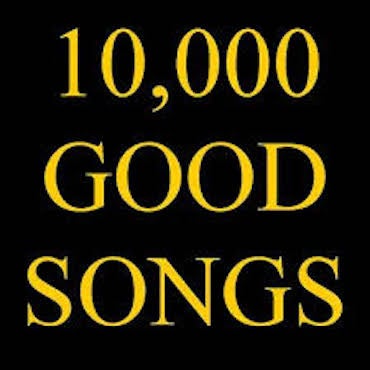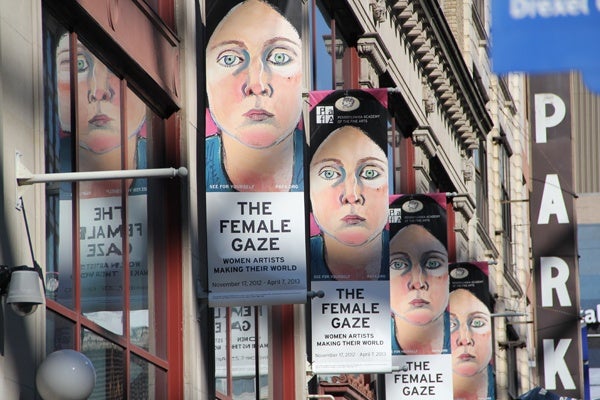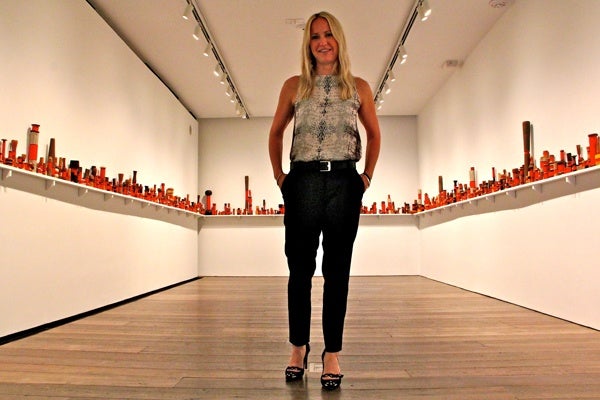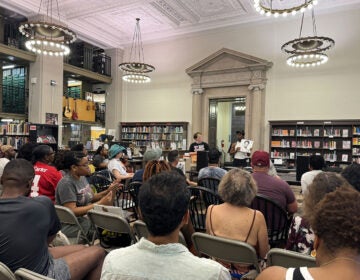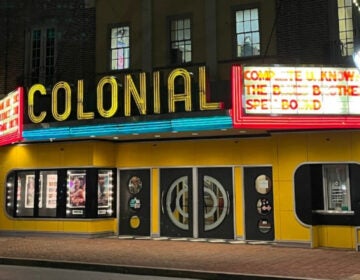Singular approaches to collecting fine art in Philly
Right now, three large and midsized museums are exhibiting works from three major, private collections in the Philadelphia region.
The Woodmere Art Museum in Chestnut Hill is featuring the collection of Philip Jamison, who has just donated hundreds of pieces of art by local artists to the museum’s collection; the Pennsylvania Academy of the Fine Arts is showing part of the 500-piece collection of art by women, permanently donated by Linda Lee Alter (“The Female Gaze”); and the Philadelphia Museum of Art is showing the outsider-art collection of Jill and Sheldon Bonovitz (“Great and Mighty Things”), which has been promised to the Museum as a gift.
On a more modest scale, the artist collective Vox Populi in North Chinatown is featuring selected items from the collections of its members in a temporary show, “Collection.”
Here are some art insights from collectors and dealers in the region:
Jill Bonovitz
“The very first piece we bought wasn’t a piece of outsider art. It was a Navajo saddle. We bought it soon after we got married, in 1967.
“We really focused on artists whose work we really loved. After a while, after looking at a lot of artists, we got the idea of which stood out. With a few standouts, we’ve never found a piece we wanted to buy. We haven’t closed it out, but Henry Darger – we don’t have any of his work. We don’t have any Thornton Dial’s work.”
Sheldon Bonovitz
“It’s not a survey. If a museum were going to put together a collection, they would have Darger and Dial, certainly. Although we focused on collecting the work, we didn’t focus on collecting a museumlike collection that would represent the field. We just bought the artists we like.”
John Ollman, Fleisher-Ollman Gallery
“Collectors like Jill and Sheldon — who identify artists that they respond to — they pursue those artists and continue to upgrade. The pursuit is not finding new artists, but the best representations of those artists.”
Sheldon Bonovitz
“We each have a veto. Jill has this little sewing room that’s 4-by-8, with two skylights. If I don’t like the work and she loves it, it’ll go there. I’ve got 30,000 square feet here on my floor [at the downtown offices of Duane Morris law firm] so I can find space here. That doesn’t reflect the rate of rejection.”
Linda Lee Alter
“After a while, I realized I collected art by men. That’s what I saw. That’s what was out there. I wasn’t thinking about art by men or women, I just bought what I liked. So here I am, and I didn’t get any art by women. I was upset with myself, and surprised.
“I’m a shy person. I never was impressive in the way I present myself. Jeans and a sweater is dress-up for me. You go into these big, fancy galleries — well-known galleries — they look you over and if it doesn’t look like you can afford the work, they don’t pay any attention to you. Being shy, asking about the back room is overwhelming for me.
“[Curator] Judith Stein was kind enough to work with me for a while, and introduce me to galleries. I felt a little more at home. She was really good at introductions and taking into consideration that I was a collector with a point of view.”
John Ollman
“The most important room in the house is the closet. I tell people to take things down and put it in storage. If they miss it, bring it out. If they don’t, sell it. I don’t advocate accumulating.”
Sheldon Bonovitz
“The spaces are so empty, we’re having our house painted for the first time in 22 years.”
Philip Jamison
“I went to Philadelphia to the Janet Fleisher gallery. She handled my work when I was in art school [PAFA], I had my first one-man show in there. I went in and saw this painting leaning against the wall. I asked, ‘Who did that?’ She said, ‘Arthur B. Carles.’ I said, ‘Who’s Arthur B. Carles?’
“The next week I went in and the same painting was there on the floor. I got to like it more, so I asked if I could take it home, and, if I liked it. would she take the money for it out of my work in the gallery? That was the first Carles that I bought.
“We had about seven artists here in West Chester who all went into Philadelphia together on the train, when we went to school together. They were all pretty good. Tom Bostelle is in my collection and in the show at Woodmere. He’s dead now.”
Shelley Spector, artist, founder of Spector Gallery (1999 – 2007)
“In 1999, I wasn’t planning to open a gallery. But a lot of art started appearing that got me excited. That doesn’t happen a lot.
“The people I was catering to was a younger clientele, with less money but who had a love for this. They really wanted the work. I would work with people – set up a payment plan or put stuff on hold for a while because I knew they really wanted it.
“As the work got more expensive and artists started getting more well-known, a different clientele came. They started negotiating the price down. The people who didn’t negotiate the price could not afford the work, and the those who did negotiate could afford the work.”
Bridgette Mayer, founder Bridgette Mayer Gallery
“I was interested in working with emerging artists that didn’t have representation … they were literally stepping out of graduate school. Shelley was working with a lot of unknown artists as well, but they were a lot more self-taught, street artists. Philadelphia has many talented artists at that level, and I really appreciated what she was bringing to the city at that time.
“I started my gallery 13 years ago with no clients. My first sale was to a cab driver … In the last five years we’ve been doing art fairs, and growing the collector base outside this region.
“What’s tricky right now is that there are so many artists out there, so many different price points on the market. Part of the challenge is knowing how to research an artist, knowing what to buy, how to establish a budget. The emerging collector tends to not trust their inner voice, their judgment, their aesthetic. That’s where I come in.”
Shelley Spector
“Most of the commercial gallery spaces are older spaces. Philadelphia traditionally has a conservative twist to it. The younger galleries are a little more do-it-yourself artist spaces. They are not commercial. Bridgette is pushing toward being a major commercial gallery, on par with New York and Los Angeles. In Philadelphia galleries usually don’t have the swagger of New York and L.A.”
Philip Jamison
“I love to look at other people’s work, not my own. When I see my own work, I only see how to improve it. When I see other people’s work, I only enjoy it.”
Beth Heinly, artist, member of Vox Populi collective
“The art I collect – the most I’ve spent is probably $50. But the artwork has to speak to me. I have to be able to live with it, it has to cater to my sense of humor.
“I have a Michael Gerkovich. He did a photograph of a dead cat that I have in my home. I actually, technically, stole it from him. He installed it at Little Berlin [a Fishtown artist collective of which Heinly was a founding member] and I loved it. When they were deinstalling it, I pretty much just took it. I told him, ‘I promise I’ll give you something in exchange,’ which I never did.”
TheArtBlog.org contributed to this story.
WHYY is your source for fact-based, in-depth journalism and information. As a nonprofit organization, we rely on financial support from readers like you. Please give today.

